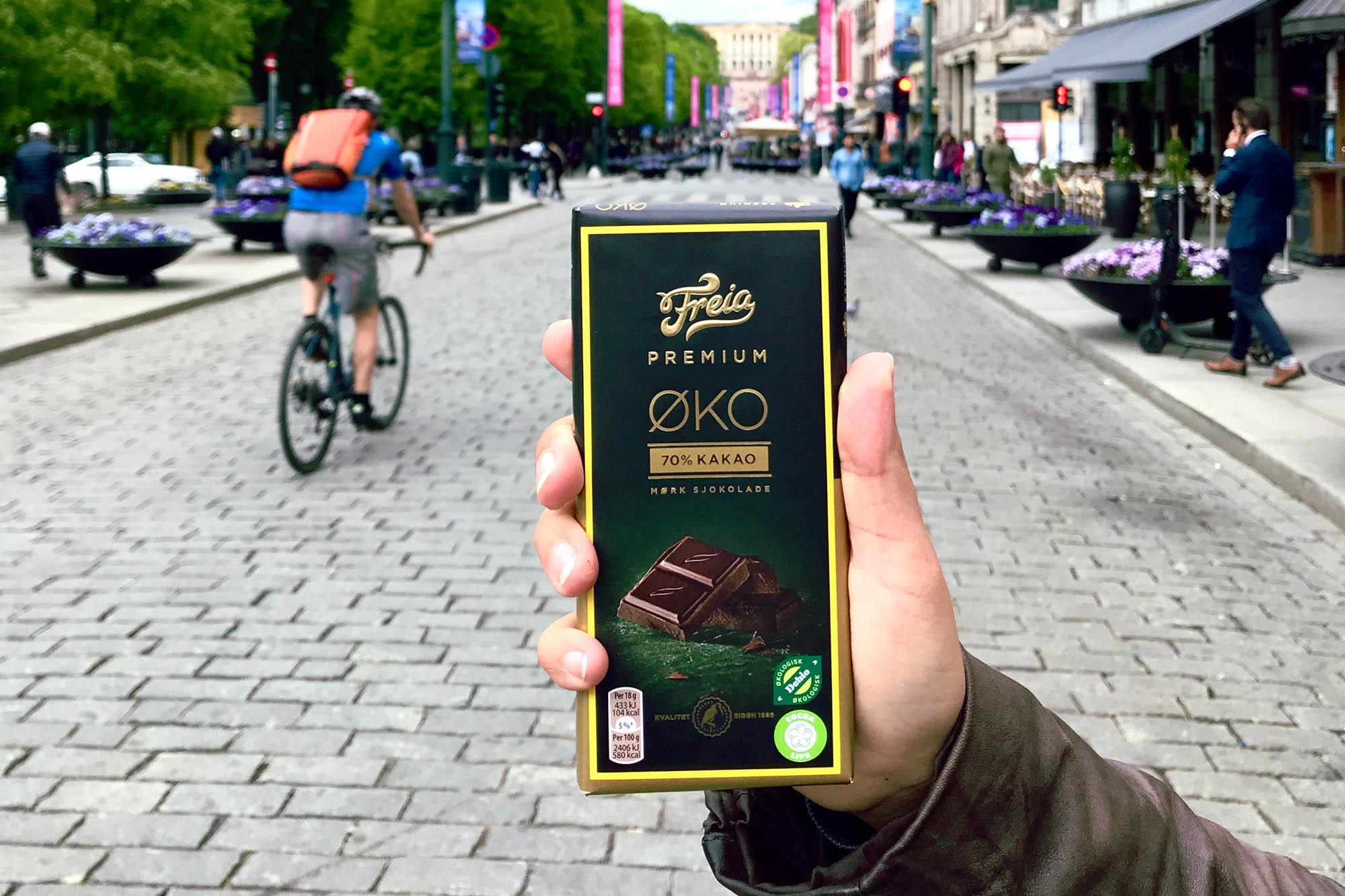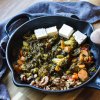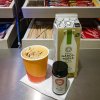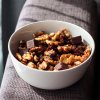JUMP TO
In this article I want to focus on the traps of 70% chocolate and what are your best options when it comes to choosing a healthier type of chocolate.
If you’re like me and you follow a low-carb eating style, or maybe you simply want to stay away from added sugar, you probably ask yourself if 70% chocolate is ok to eat. Well … Yes and No!
Dark chocolate is known for its high flavonoids content and 70% cacao seems like a decent number. It’s not too sweet and not too dark either, it doesn’t normally contain milk, soy or other kinds of additives, so what could be wrong with it?
Why 70% chocolate isn’t that great?
People often ask me what kind of chocolate I eat and when I tell them that like my chocolate to have at least 85% cacao, they tend to be puzzled by my answer. “85% chocolate, really?”.
You see, while dark chocolate may seem bitter at first, if you give it a chance you’ll definitely learn how to love it. Chocolate is like a good French wine, it needs love, attention and caring. It’s all about those subtle flavors that one must first learn to discover before one can enjoy.
On the other hand, 70% chocolate is situated in the middle between very sweet chocolate (30%) and dark chocolate (85% or more). This makes it appealing to all chocolate lovers, and this means that companies are able to sell more (they’re selling to a wider market).
Here are a few reasons why I believe that 70% chocolate is not that great:
Made with low-quality cacao.
The primary market for this product are people that usually consume 30-50% chocolate (yes, the rest is mainly sugar). For most of them, 70% dark chocolate looks like a milestone because of the bitter taste, compared to 30-50% chocolate. It’s a matter of getting used to the real cacao taste.
Most people eating low-cacao chocolate aren’t really used to appreciate the real cacao taste, so companies tend to use the lowest quality type of cacao here. You can feel it in the taste and it will also reflect in the price, since 70% chocolate is relatively cheaper compared to dark chocolate.
It’s loaded with sugar.
If you’re lucky enough to find it without additives, it still has 30g of sugar (raw cane sugar or other types) which is undoubtedly bad for your health. For instance, if you follow a ketogenic diet, 70% chocolate will easily put you out of ketosis, spiking your insulin levels and keeping you in the same sugar-burner pattern. Even worse, this much sugar will promote those sugar cravings that you’re working so hard to overcome.
Forget about Paleo, Whole30, Low-carb or Keto.
With so much added sugar, you can forget about Paleo, Whole30 or Keto eating. You know by now that sugar is bad for your health, being the root cause for so many chronic diseases. Why would you want to eat a product that contains so much added sugar, listed as one of its main ingredients? Sugar is a refined product so it’s no surprise that it’s always excluded from any kind of health-promoting programs.
Too expensive for the quality you get.
What’s the main ingredients used in “regular” chocolate? Is it cacao? Of course NOT! The main ingredients used in low-quality chocolate are almost always sugar, milk or both. Since for 70% chocolate the recipes don’t usually call for using any kind of milk, you basically end-up paying for 30g of sugar. In my opinion, you’ll be better off buying 99% dark chocolate, or making your own healthy chocolate at home, using cacao mass, cacao butter and a natural sweetener like coconut sugar.
Too sweet, no matter the brand.
Compared to true dark chocolate, 70% chocolate is made using the worst kinds of sweeteners. Because companies tend to use raw cane sugar instead of healthier alternatives like coconut sugar, this kind of chocolate will always end-up having a “cheap” taste. While it may appear “dark” to people that have never experienced real chocolate, for the connoisseur it simply is an inferior quality product.
Organic labels will trick people into buying it.
More often than you’d think, you’ll find 70% chocolate in almost all supermarkets, at the organic products aisle. And because it’s labeled organic, this kind of product sells very well. But what I noticed is that companies tend to use the lowest quality cacao for the 70% “organic” chocolate, and this translates to fewer nutrients overall. Let me explain …
In order to end-up with an antioxidant-rich cacao product, it’s very important to avoid heating-up or processing the cacao beans for a very long time. In the case of the 70% dark chocolate, companies mostly use dutch cocoa which is heavily processed cacao that comes with a stronger flavor. While the flavor is stronger due to the alkalinizing agents, the overall nutritional value of this type of cacao is almost zero. As with all processed foods, a big part of the nutrients get lost during the processing phase, so it’s likely that you’ll end-up with a chocolate that’s far from the real thing.
Read my in-depth article about chocolate: The Definitive Guide to Homemade Chocolate
You’re going to crave more.
With 30g of sugar for every 100g of chocolate, there’s a big chance that you’ll actually be eating more sugar, because now you’re craving the sugar present in the chocolate. Those 30g of sugar act like bate: the chocolate it’s still sweet (which leads to sugar cravings) and only a bit bitter, just to give you the impression that it’s “dark”. In the long run, you’re eating a sugar-loaded product which only works to keep you in the same loop of craving even more sugar. You can avoid this kind of sugar cravings by choosing true dark chocolate (85%, 90%, 95% and, of course, 99%).
How about alternatives?
Now that we’ve talked about all the traps of 70% chocolate, let’s take a minute and discuss about solutions:
Eat less or avoid it completely. The most obvious solution will be to eat less or to avoid it altogether. Don’t worry, I know this is not always easy, and that’s why I’ve put together more “realistic” solutions for you below.
Coconut sugar instead of regular sugar. Another tip would be to search for chocolate sweetened with coconut sugar. Coconut sugar is a natural sugar obtained from coconuts, almost always comes from certified organic coconuts. Personally, I find coconut sugar to be very aromatic with a pleasant natural taste. it doesn’t compare with stevia, xylitol or erythritol, those have more of a “metallic” taste in my opinion.
Make your own chocolate. If you’re not used to making your own desserts, this might sound complicated. Trust me, it’s not! Making your own chocolate is easy, fun and cheaper than buying healthy chocolate from the store. Check-out some of my favorite homemade chocolate recipes below:
My favorite homemade chocolate recipes
- Keto Chocolate Macadamia Mango Bites
- Homemade Dark Chocolate with Walnuts
- Homemade Chocolate Hazelnut Coconut Bars
- Easy Keto Chocolate Fat Bombs with Cranberries
Takeaway
- Try choosing true dark chocolate, 85% or above, instead of chocolate with 70% or less cacao. This way you’ll get a quality product with more nutrients and a superior taste.
- Look for chocolate that’s made with coconut sugar instead of plain sugar (or raw cane sugar).
- Search for chocolate that has only 3 ingredients: cacao mass, cacao butter, and coconut sugar. Or simply make your own chocolate.
- Real chocolate doesn’t contain soy, milk, additives or preservatives of any kind.
- Usually you can find very good dark chocolate in the organic shops.
- Are you tracking you daily carbs intake? With 70% chocolate, you get 30g of sugar which will definitely spike your insulin levels, keeping you in the sugar burner zone.
- If you follow a low-carb or keto eating style, focusing on keeping insulin low, consider choosing a chocolate that’s at least 85% cacao.
- If you’re not used to eating real dark chocolate (85% or above), you’ll need some transition time. Much like a French wine, real chocolate has a strong aroma that is different compared to the regular sugar loaded products that you can find anywhere.
- Consider making your own healthy chocolate; it’s fun, easy to make and cheaper than what you can buy from the store. This way you’ll control the taste and the quality of the ingredients.
- A note regarding cacao vs cocoa.
- Cacao refers to raw cacao, the unprocessed product full of antioxidants which is more acidic actually.
- Cocoa refers to the dutch processed version of raw cacao This processed cocoa is alkalinized, darker in color and costs less, but also lacks all the antioxidants and enzymes that true raw cacao has.
How does your version of healthy chocolate looks like? Share in the comments.




















